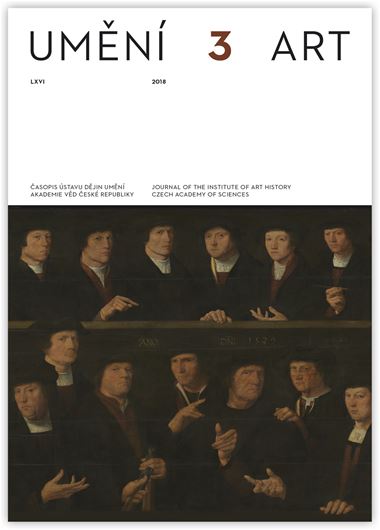Michaela Ramešová
Portál do Staré sněmovny. K původu a povaze vzorů all’antica v huti Benedikta Rieda
The portals created by Benedict Ried’s lodge for the Vladislav Hall at Prague Castle ca. 1500 were the pioneer Bohemian works inspired by all’antica forms. The forms of the portals may, in fact, be associated with three European traditions (the so-called Romanesque, Gothic, and Renaissance). The portal to the Old Diet Hall is particularly revealing in this regard consisting of a ‘Renaissance’ edicule, an entablature, and a round pediment supported by columns with spiral mouldings. The attic bases are decorated with spurs typical of ‘Romanesque’ art. The twisted pilasters suggest a ‘Gothic’ design method. The interpretations of the portal also seem heterogeneous. Both the forms of the portal and their interpretations will make sense though, if the portal is compared with liturgical furnishings (all’antica tabernacles) rather than large-scale portals. All the portal features seem to complement each other then. The round pediment and spiral forms were frequent in Italian Quattrocento tabernacles. In the European tradition, they were used to designate sacred and memorable places. Similarly, spiral columns served to allude to Solomon’s Temple, i.e. the prototype of any Christian church, altar/tabernacle housing the Eucharist. The architecturally conceived perspectival tabernacle became prevalent in the Italian Quattrocento. If such a model was taken up to create the Old Diet Hall portal, it might explain why the edicules are set behind each other. It would not be a misinterpretation, but rather a literal application of what such a model suggested: a perspectival ‘breech’ of the wall. The twisted pilasters may be explained in a similar way. The solomonic fluting could be close to Ried’s aesthetic feel with its focus on the dynamic and elusive. In this way, Ried could see the all’antica forms as suitable to develop his own methods. The spurs were widespread in 15th century Venetian sculpture. Since the Adriatic rim was part of the Venetian Republic, and Matthias Corvinus had political ties with Dalmatia, the models from these regions could easily make their way to Hungary via Dalmatian stonecutters who worked for Corvinus in Buda, as attested by archival data. The Vladislav Hall façade capital with a well (one of Corvinus’ emblems) clearly shows stonecutters from Buda came to Prague.
Full-text in the Digital Library of the Czech Academy of Sciences:
https://kramerius.lib.cas.cz/uuid/uuid:527a0029-5b57-4872-8dcd-f1350ff7cf6d
< back

